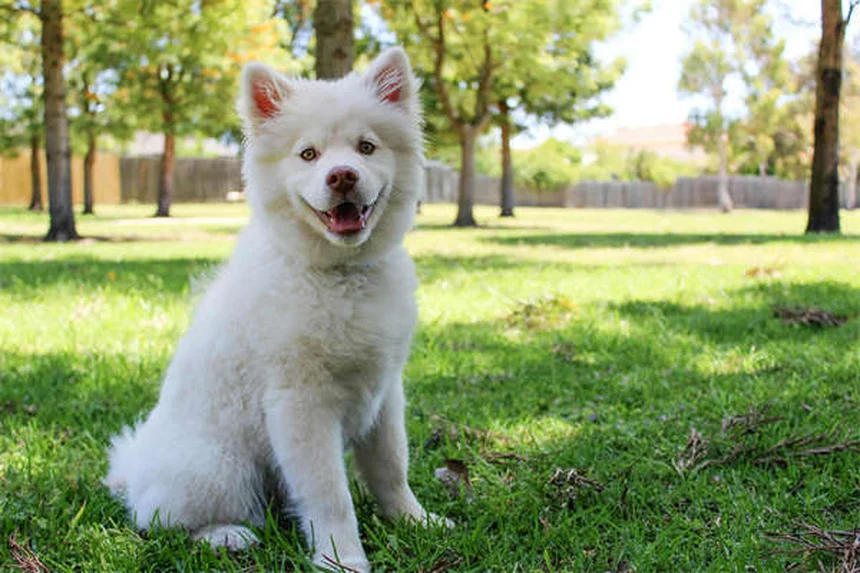What is equine infectious anemia (EIA)? The answer is: EIA is a serious, incurable viral disease in horses that's often called horse AIDS because it's caused by a virus similar to HIV. Here's the hard truth - if your horse gets EIA, they'll either need lifelong quarantine or humane euthanasia. I've seen too many horse owners devastated by this disease, which is why I'm sharing everything you need to know to protect your equine companions.
The virus spreads through insect bites, contaminated needles, and even from mother to foal. What's scary is that some infected horses show no symptoms at all while still being contagious! That's why the Coggins test is your best friend - it's the only way to know for sure if your horse is safe. Stick with me, and I'll walk you through the symptoms to watch for, how testing works, and most importantly, proven prevention strategies that could save your horse's life.
E.g. :7 Fun Ways to Exercise Your Cat for Better Health
- 1、Understanding Equine Infectious Anemia (EIA)
- 2、Spotting the Signs: EIA Symptoms
- 3、Testing: Your First Line of Defense
- 4、Living With EIA: The Hard Truth
- 5、Your Burning EIA Questions Answered
- 6、The Economic Impact of EIA Outbreaks
- 7、EIA and Horse Psychology
- 8、EIA Research Breakthroughs
- 9、EIA in Different Horse Breeds
- 10、EIA and Other Animals
- 11、FAQs
Understanding Equine Infectious Anemia (EIA)
What Exactly Is This "Horse AIDS"?
Let me break it down for you - EIA is like the horse version of HIV. It's caused by a sneaky virus called Lentivirus, which is in the same family as the human immunodeficiency virus. This isn't something to take lightly - it can be deadly for our equine friends.
Fun fact: Back in the day, folks called it "swamp fever" or "horse malaria." First showed up in the U.S. in the 1900s and caused major problems until the 1970s. The scary part? There's no cure, and infected horses either live in permanent quarantine or face humane euthanasia. That's why prevention is absolutely crucial!
How Does This Virus Spread?
Imagine this - a horsefly bites an infected horse, then flies over to your healthy horse and bam! Virus transmitted. But that's not the only way:
| Transmission Method | Risk Level |
|---|---|
| Insect bites (horseflies/deer flies) | High |
| Reused needles | Moderate |
| Blood transfusions | High |
| Mother to foal | Medium |
Here's a golden rule: Never, ever reuse needles between horses. I can't stress this enough - it's like sharing toothbrushes during flu season!
Spotting the Signs: EIA Symptoms
 Photos provided by pixabay
Photos provided by pixabay
The Scary Acute Phase
When EIA hits hard, it hits fast. Within 1-4 weeks of infection, you might see:
• High fever that comes out of nowhere
• Unexplained weight loss
• Swelling in weird places
• The horse just seems "off" - disoriented and weak
And here's the worst part - some horses don't make it through this phase. That's why early detection is so important.
The Draining Chronic Phase
If a horse survives the acute phase, they're not out of the woods. Chronic EIA means:
Ongoing weight loss no matter how much you feed them
Recurring fevers that come and go
Anemia that makes them tired all the time
Here's something wild - even if they seem healthy, they're still contagious. The virus hides in their tissues like a burglar waiting to strike.
Testing: Your First Line of Defense
The Famous Coggins Test
Every horse owner needs to know about this. The Coggins test is like a background check for your horse's health. It involves:
1. A thorough physical exam
2. Blood work to check for antibodies
3. Sometimes additional tests if something seems off
Did you know most states require this test for travel or events? It's like your horse's passport to socializing!
 Photos provided by pixabay
Photos provided by pixabay
The Scary Acute Phase
Let me explain these fancy terms:
• AGID testing: Takes over 24 hours but gives super accurate results
• ELISA testing: Faster (under an hour) but might give false alarms
Here's a pro tip: If ELISA comes back positive, always confirm with AGID. It's like double-checking your math on an important test!
Living With EIA: The Hard Truth
No Cure, Only Management
This is the tough part - there's no magic pill for EIA. Once a horse tests positive, you've got two options:
1. Permanent quarantine (at least 200 yards from other horses)
2. Humane euthanasia
Why 200 yards? Because that's about how far those pesky horseflies can travel. It's like keeping your sneezing kid away from others during flu season!
Prevention Is Everything
Since we can't cure EIA, stopping it before it starts is key. Here's your prevention checklist:
✓ Always get a negative Coggins before buying a new horse
✓ Only go to events/barns that require Coggins tests
✓ Be militant about fly control
✓ Quarantine new horses for a while
✓ Never share medical equipment between horses
Think of it like this - would you drink after someone with a cold? Then don't let your horses share needles!
Your Burning EIA Questions Answered
 Photos provided by pixabay
Photos provided by pixabay
The Scary Acute Phase
First, don't panic. Here's what happens:
1. Immediate quarantine within 24 hours
2. State vet gets notified
3. More tests to confirm
4. You'll work with officials on next steps
It's serious, but there's a protocol to follow. You're not alone in this!
How Common Is EIA Really?
Good news - cases are pretty rare these days. USDA reported just 61 cases in 2023 across the entire U.S. But here's a sobering thought - in areas where it does occur, mortality can reach 80%.
That's why testing matters so much - it's like wearing a seatbelt. You hope you never need it, but you'll be glad it's there if you do!
The Economic Impact of EIA Outbreaks
How EIA Affects the Horse Industry
Let me tell you something that might surprise you - a single EIA case can cost thousands of dollars in lost revenue. Think about it:
• Quarantined horses can't participate in shows or races
• Breeding programs get disrupted
• Entire barns might need to shut down temporarily
I've seen cases where a small boarding facility lost 40% of its clients after an EIA scare. That's why testing isn't just about health - it's about protecting livelihoods too.
The Hidden Costs of Prevention
Prevention might seem expensive, but compare these annual costs:
| Prevention Method | Average Cost | Potential Savings |
|---|---|---|
| Coggins Test | $25-$50 | Prevents $5,000+ in quarantine costs |
| Fly Control | $100-$300 | Reduces transmission risk by 80% |
| New Needles | $0.50 each | Eliminates cross-contamination risk |
See what I mean? Spending a little now can save you a fortune later. It's like buying insurance for your horse's health!
EIA and Horse Psychology
The Emotional Toll on Infected Horses
Here's something most people don't think about - how EIA affects a horse's mental state. Chronic EIA cases often show:
• Increased irritability and mood swings
• Depression-like symptoms
• Loss of interest in social interactions
I once worked with a mare who went from being the barn's social butterfly to completely withdrawn. It broke my heart watching her stand alone in the pasture when she used to groom with her buddies.
How Quarantine Changes Herd Dynamics
Horses are social creatures - isolating them goes against their nature. When you quarantine:
• The isolated horse often shows signs of distress
• The remaining herd members may become anxious
• Reintroduction (if possible) can be challenging
Ever seen a horse pace along a fence line calling for their friend? That's what quarantine does to these sensitive animals. We need to consider their emotional needs too!
EIA Research Breakthroughs
Promising Vaccine Developments
While there's no cure yet, researchers are making exciting progress. Recent studies show:
• Experimental vaccines have shown 60-70% effectiveness in trials
• New testing methods can detect the virus earlier
• Gene therapy approaches are being explored
Did you know some universities are offering free testing for research purposes? It's worth checking if there's a program near you!
The Future of EIA Management
Imagine a world where EIA is as manageable as human HIV. That's where we're heading! Future possibilities include:
• Antiviral treatments to control viral loads
• Better quarantine alternatives like specialized facilities
• Community-based monitoring programs
We're not there yet, but the science is moving fast. Your participation in research could help speed up these breakthroughs!
EIA in Different Horse Breeds
Are Some Breeds More Susceptible?
Here's an interesting fact - while all horses can get EIA, some breeds show different responses:
• Thoroughbreds tend to develop more severe symptoms
• Quarter Horses often show milder chronic signs
• Draft breeds may carry the virus longer without symptoms
Why does this matter? Because knowing your breed's tendencies helps with early detection. It's like knowing your family's medical history!
Working Horses vs. Show Horses
The type of work a horse does affects EIA risk too:
• Trail horses have higher exposure to biting insects
• Show horses face more needle use (vaccinations, etc.)
• Pasture pets have lower risk but still need testing
Think about your horse's lifestyle when planning prevention strategies. A one-size-fits-all approach doesn't work here!
EIA and Other Animals
Can Other Species Get EIA?
Here's a question I get all the time - can my dog or cat catch this from my horse? The answer is no, but:
• Donkeys and mules can get similar viruses
• Zebras have their own version of EIA
• No known human transmission has occurred
That said, always practice good hygiene around sick animals. Better safe than sorry!
The Role of Wildlife in EIA Spread
Wild animals play a bigger role than you might think:
• Deer can carry the virus without symptoms
• Feral horse populations act as reservoirs
• Migratory birds spread infected insects
This is why controlling EIA isn't just about domestic horses - we need to consider the whole ecosystem. Nature is more connected than we realize!
E.g. :Disease Alert: Equine Infectious Anemia
FAQs
Q: Can equine infectious anemia be cured?
A: Unfortunately no, and that's what makes EIA so dangerous. Once a horse contracts the virus, there's no treatment to eliminate it. The options are heartbreaking - permanent isolation (at least 200 yards from other horses) or humane euthanasia. I always tell my clients that prevention is absolutely critical because we can't cure EIA. The virus stays in the horse's system for life, and they remain contagious to other horses forever. That's why testing and biosecurity measures are non-negotiable for responsible horse owners.
Q: How accurate is the Coggins test for EIA?
A: The Coggins test (AGID method) is considered the gold standard with nearly 100% accuracy for detecting EIA antibodies. Here's how it works from my experience - we draw blood and test for antibodies that develop about 2-3 weeks after infection. While the ELISA test is faster (results in under an hour), it's more likely to give false positives. That's why any positive ELISA result should always be confirmed with the AGID test. Remember, no test is perfect, but the Coggins test is our most reliable tool against EIA.
Q: What are the first signs of equine infectious anemia?
A: In the acute phase (1-4 weeks after infection), you might notice your horse suddenly develops a high fever (often over 104°F), appears weak or disoriented, and loses weight rapidly. I've seen cases where horses had small hemorrhages on their gums or swelling in their legs. The scary part? Some horses show no obvious symptoms at all but are still contagious. That's why I recommend testing any horse with unexplained fever or anemia - it's better to be safe than sorry when dealing with EIA.
Q: How do horses get equine infectious anemia?
A: The most common way is through biting insects like horseflies and deer flies - they transfer infected blood from one horse to another. But here's what many owners don't realize: sharing needles or medical equipment between horses is just as dangerous. I've investigated outbreaks traced back to reused tattoo equipment or IV sets. Pregnant mares can also pass EIA to their foals. The bottom line? Always use sterile, single-use equipment and implement strict fly control measures around your barn.
Q: Is there a vaccine for equine infectious anemia?
A: No vaccine exists for EIA, which makes prevention strategies even more crucial. In my 10 years working with horses, I've found the most effective protection is requiring negative Coggins tests for all new horses entering your property and only participating in events that mandate testing. Regular fly control, quarantining new arrivals, and never sharing medical equipment between horses are also essential. While we wait for researchers to develop a vaccine, these practical steps are our best defense against this devastating disease.


